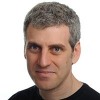Main Menu (Mobile)- Block
- Overview
-
Support Teams
- Overview
- Anatomy and Histology
- Cryo-Electron Microscopy
- Electron Microscopy
- Flow Cytometry
- Gene Targeting and Transgenics
- High Performance Computing
- Immortalized Cell Line Culture
- Integrative Imaging
- Invertebrate Shared Resource
- Janelia Experimental Technology
- Mass Spectrometry
- Media Prep
- Molecular Genomics
- Primary & iPS Cell Culture
- Project Pipeline Support
- Project Technical Resources
- Quantitative Genomics
- Scientific Computing
- Viral Tools
- Vivarium
- Open Science
- You + Janelia
- About Us
Main Menu - Block
- Overview
- Anatomy and Histology
- Cryo-Electron Microscopy
- Electron Microscopy
- Flow Cytometry
- Gene Targeting and Transgenics
- High Performance Computing
- Immortalized Cell Line Culture
- Integrative Imaging
- Invertebrate Shared Resource
- Janelia Experimental Technology
- Mass Spectrometry
- Media Prep
- Molecular Genomics
- Primary & iPS Cell Culture
- Project Pipeline Support
- Project Technical Resources
- Quantitative Genomics
- Scientific Computing
- Viral Tools
- Vivarium
Note: Research in this publication was not performed at Janelia.
Abstract
Michael Akam has been awarded the 2007 Kowalevsky medal for his many research accomplishments in the area of evolutionary developmental biology. We highlight three tributaries of Michaels contribution to evolutionary developmental biology. First, he has made major contributions to our understanding of development of the fruit fly, Drosophila melanogaster. Second, he has maintained a consistent focus on several key problems in evolutionary developmental biology, including the evolving role of Hox genes in arthropods and, more recently, the evolution of segmentation mechanisms. Third, Michael has written a series of influential reviews that have integrated progress in developmental biology into an evolutionary perspective. Michael has also made a large impact on the field through his effective mentorship style, his selfless promotion of younger colleagues, and his leadership of the University Museum of Zoology at Cambridge and the European community of evolutionary developmental biologists.


